Abstract
For over a century, spleen palpation has been the method used for estimating the degree of endemic malaria in a community. As there is no way of estimating the mean volume and weight of the spleen on the live individual, the only alternative is to examine the organ at autopsy.
There is very little published information concerning the weight and size of the spleen in Africans, in spite of the obvious importance and interest of this problem in holo-endemic malarious areas.
The first aim of the present study was to assess the biometric constants for spleen- and liver-weights recorded in a large number of autopsies in persons of all age-groups of the African population from Lagos and its environs.
The relevant constants from autopsies of Europeans in a non-malarious area were then obtained and the two sets of data were compared.
Finally, the author determined to what extent the results of past splenometric surveys in the live population of Lagos could be correlated with the autopsy findings in the same area.
Full text
PDF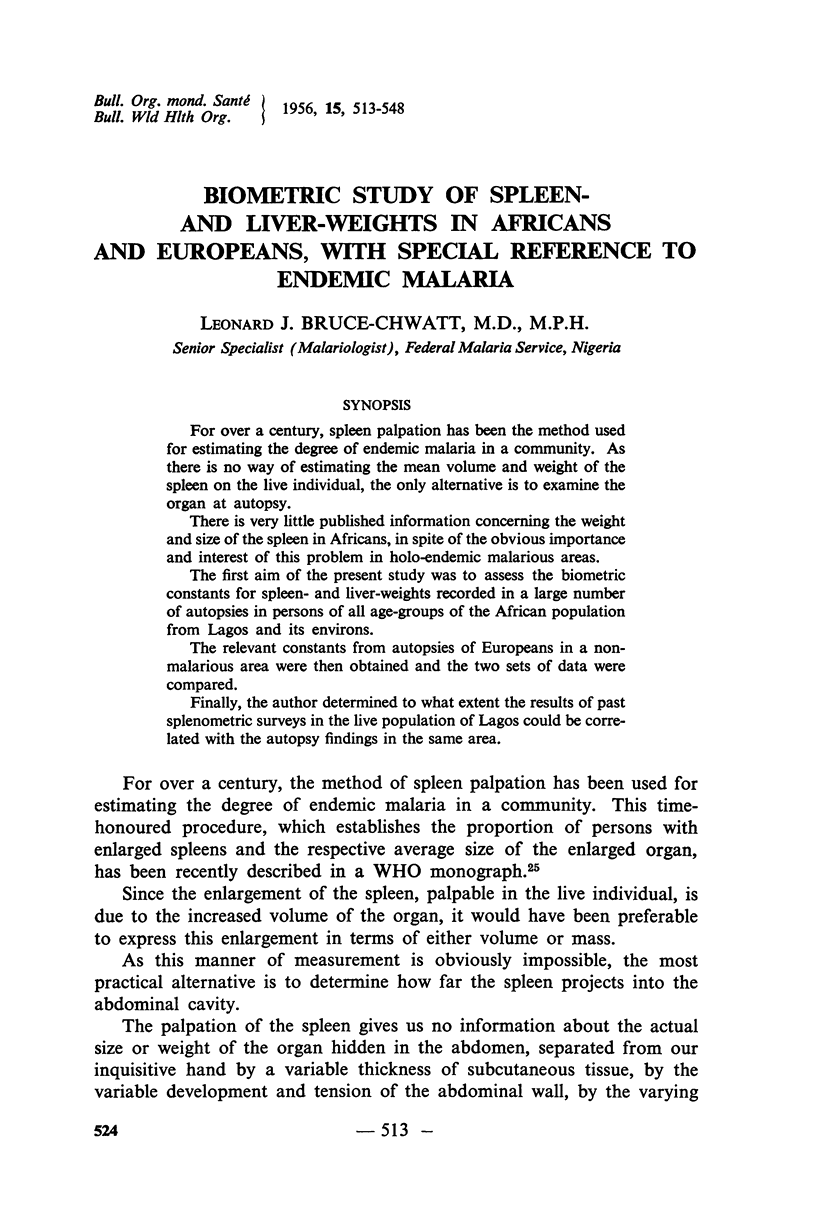
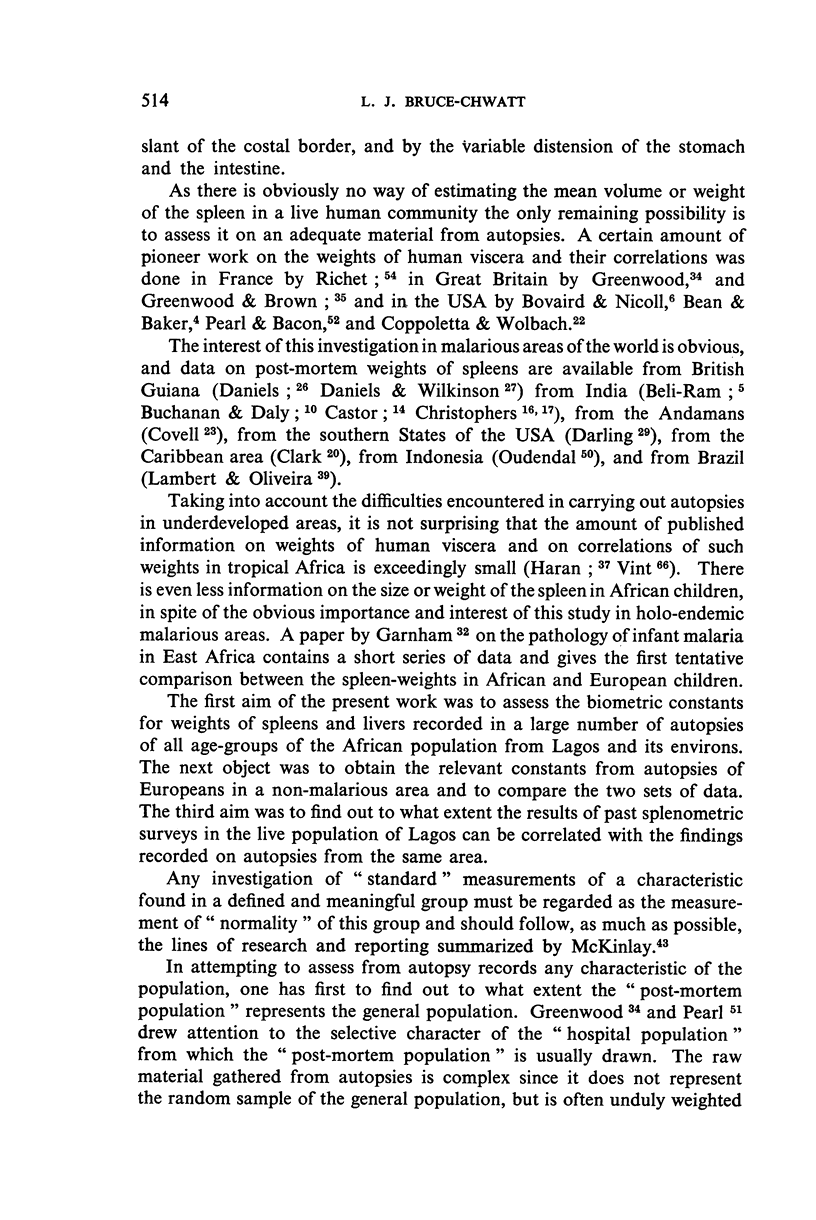
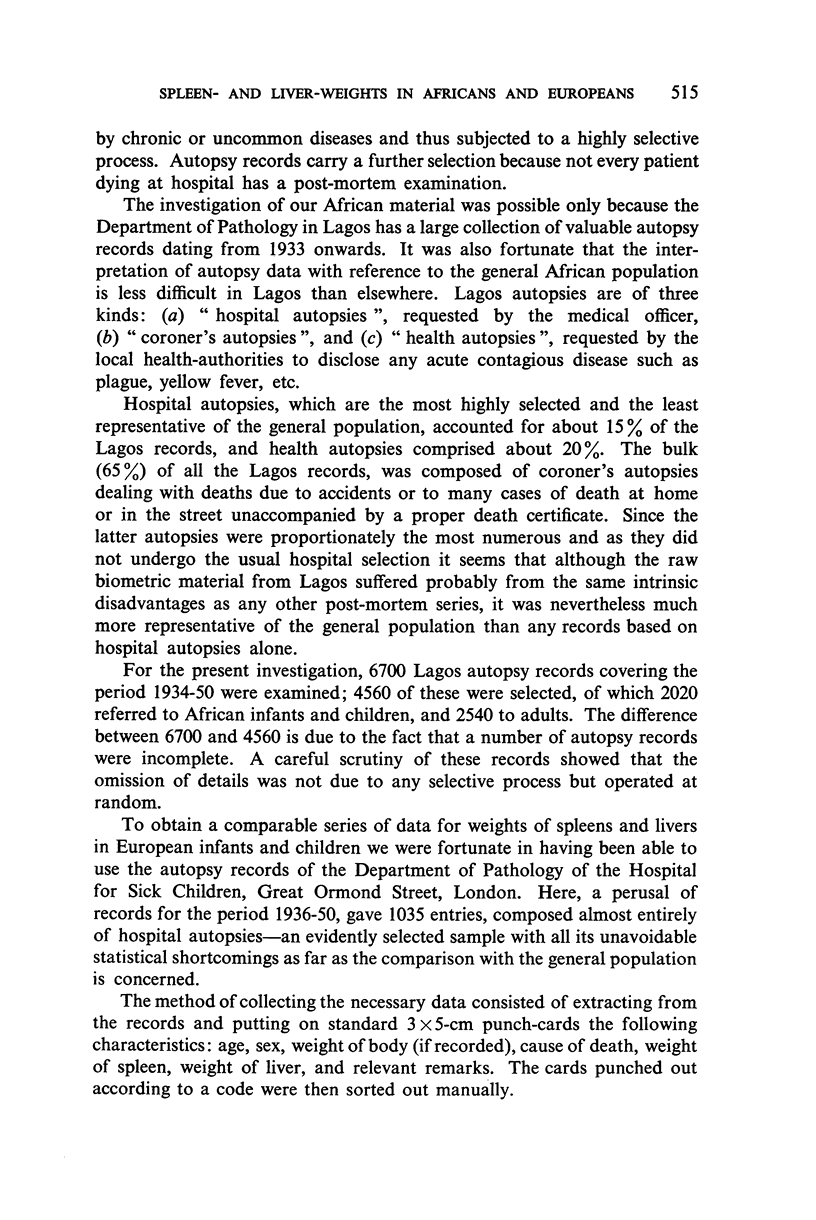


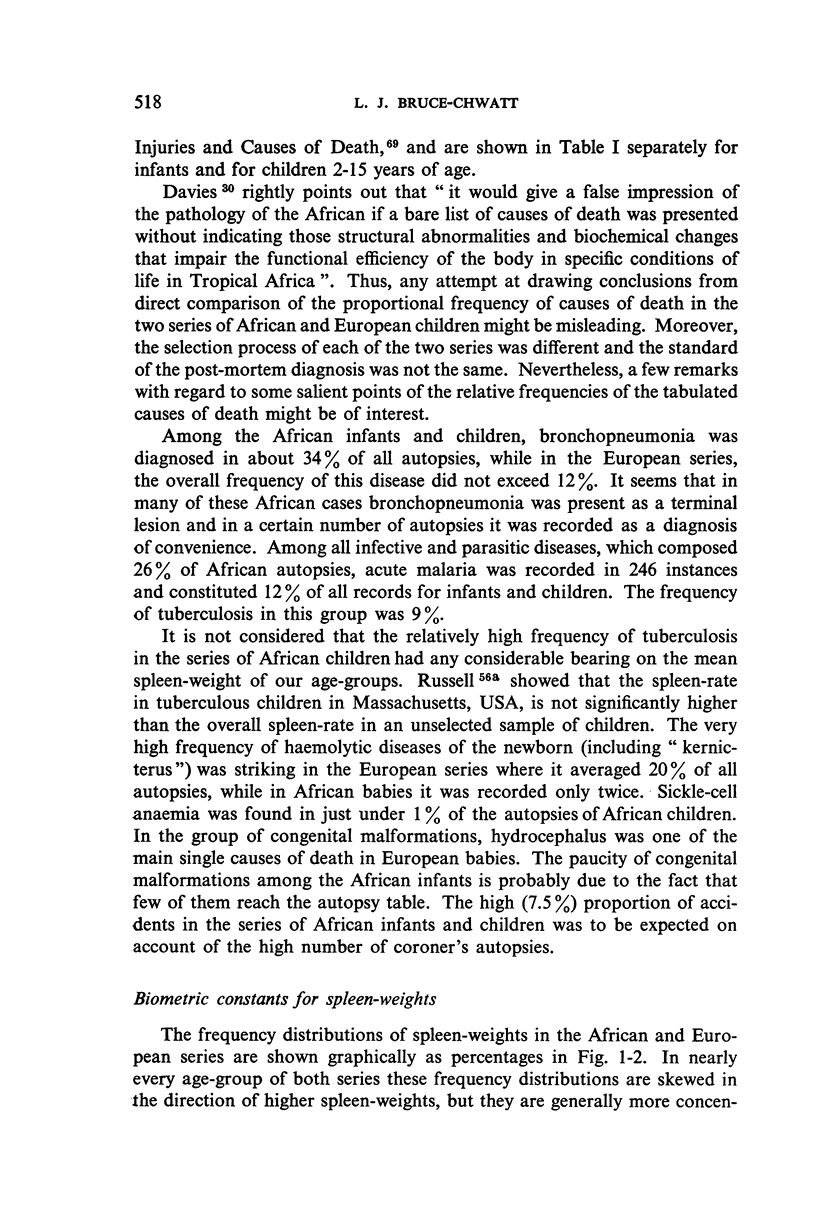
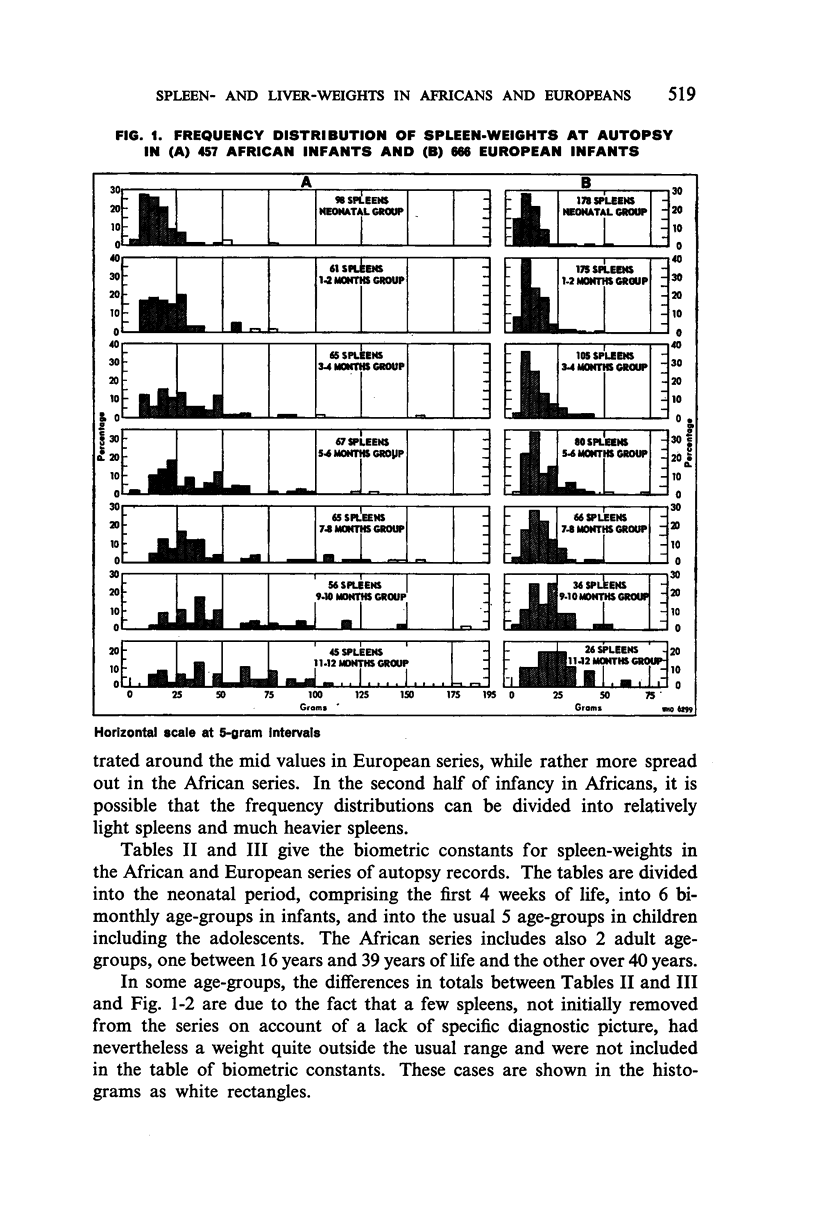
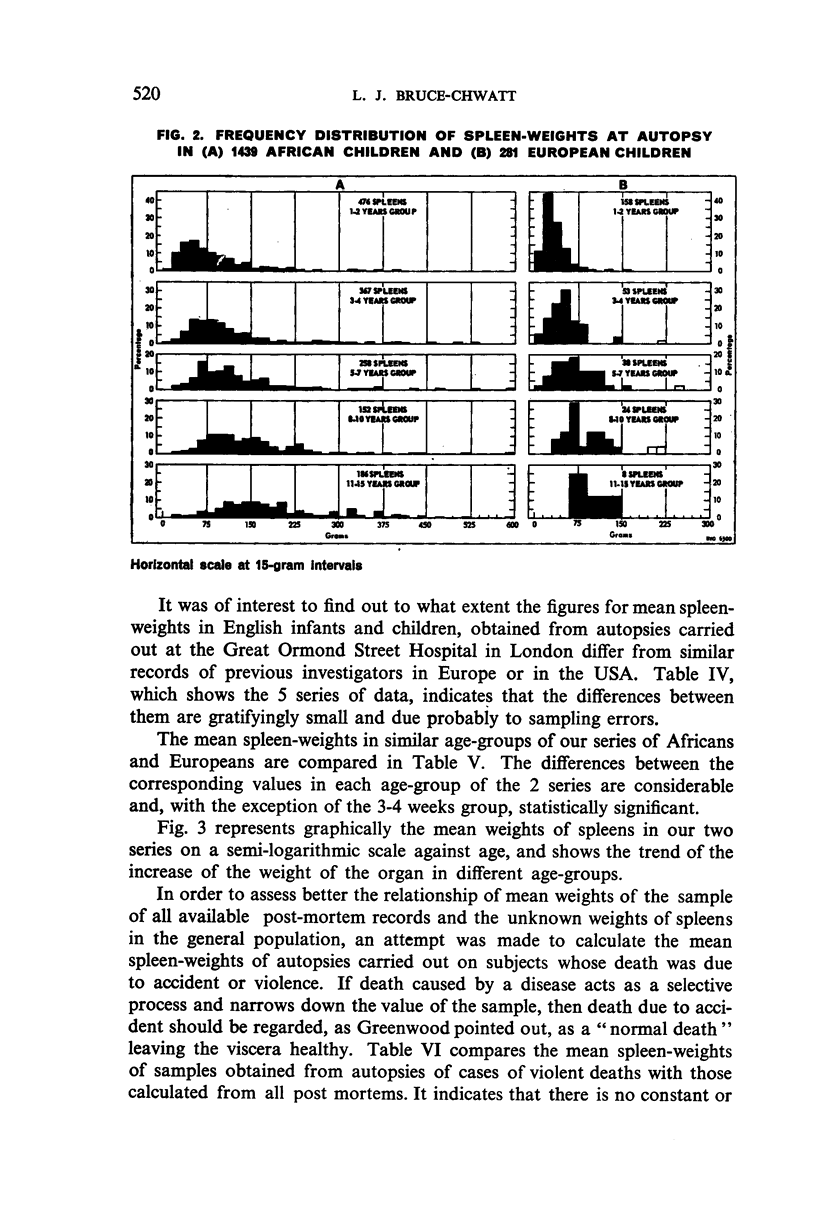
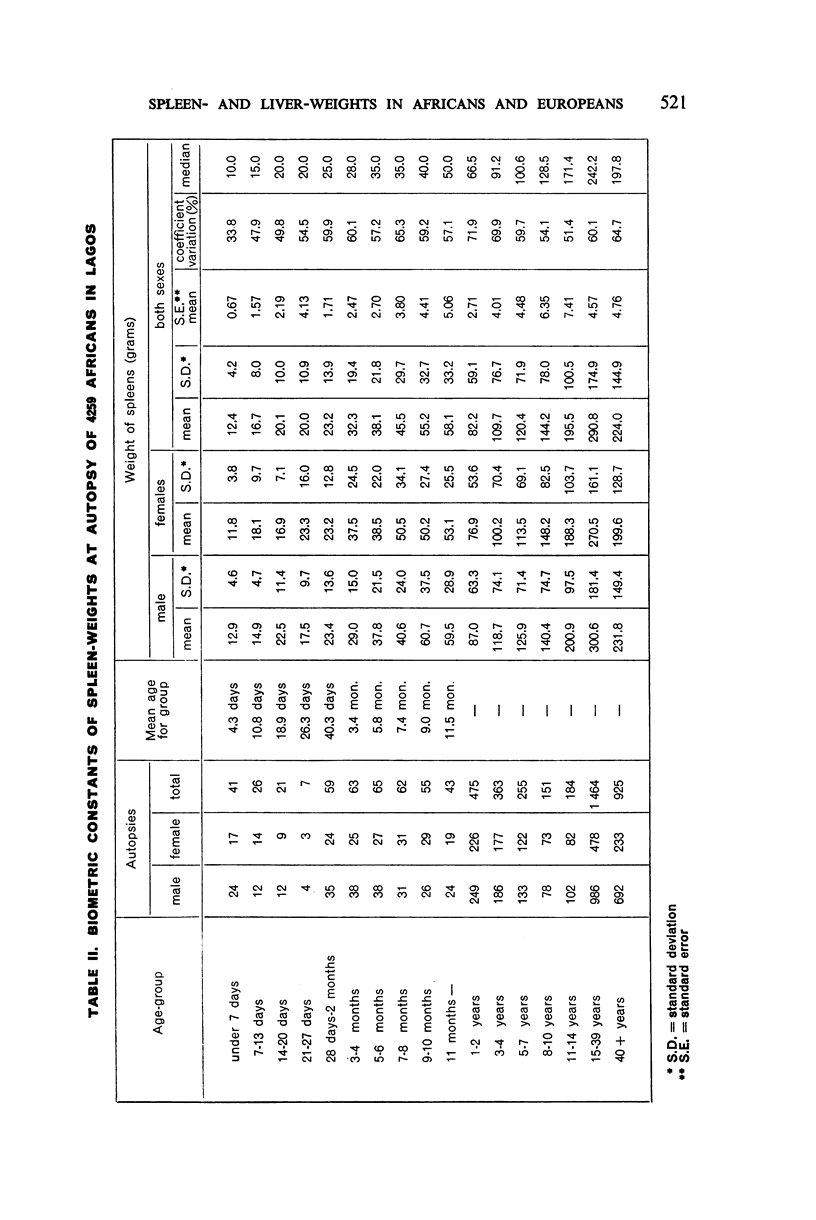
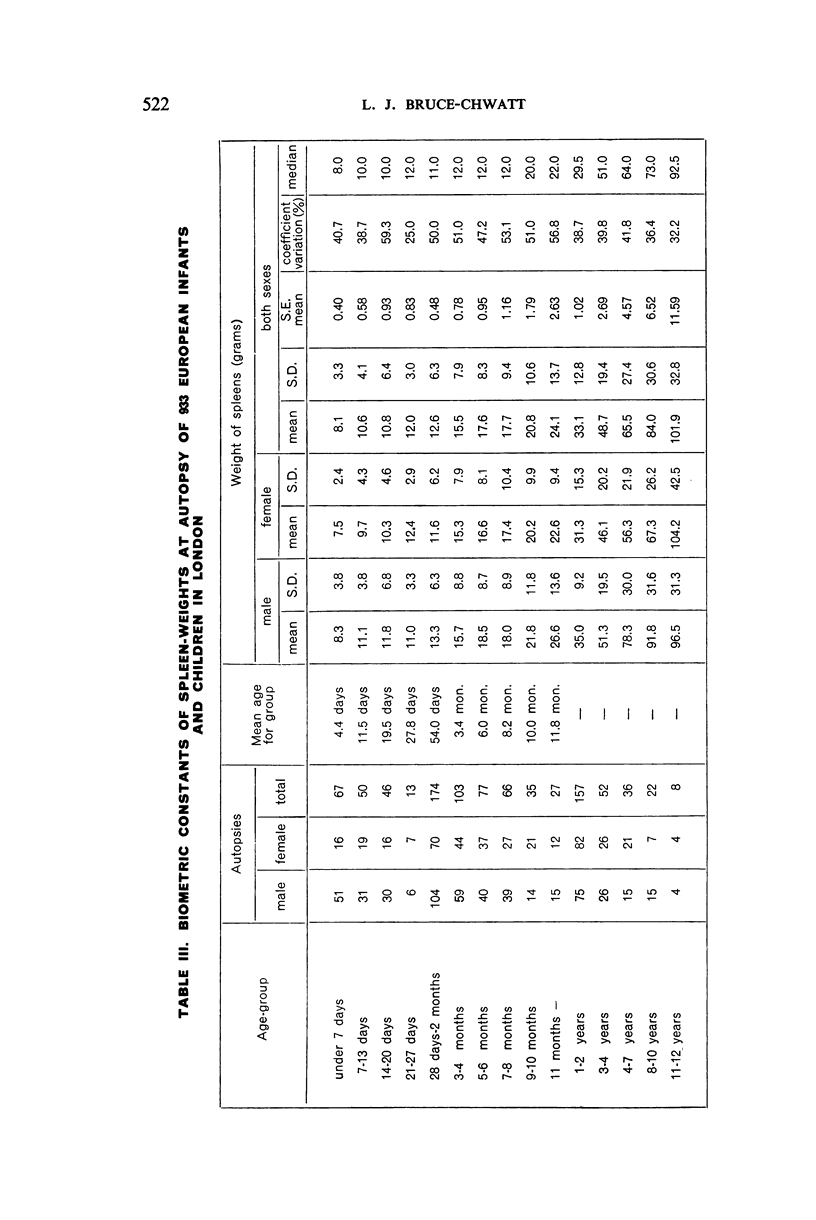

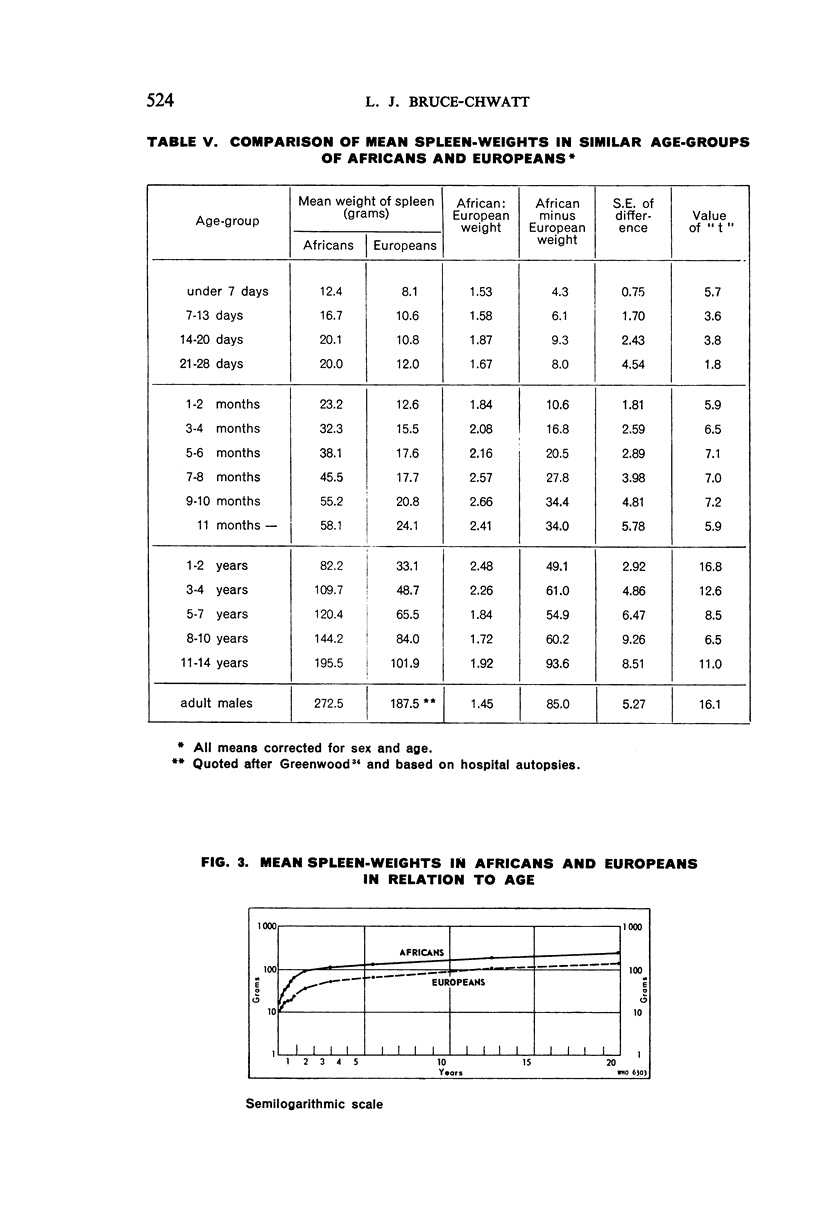

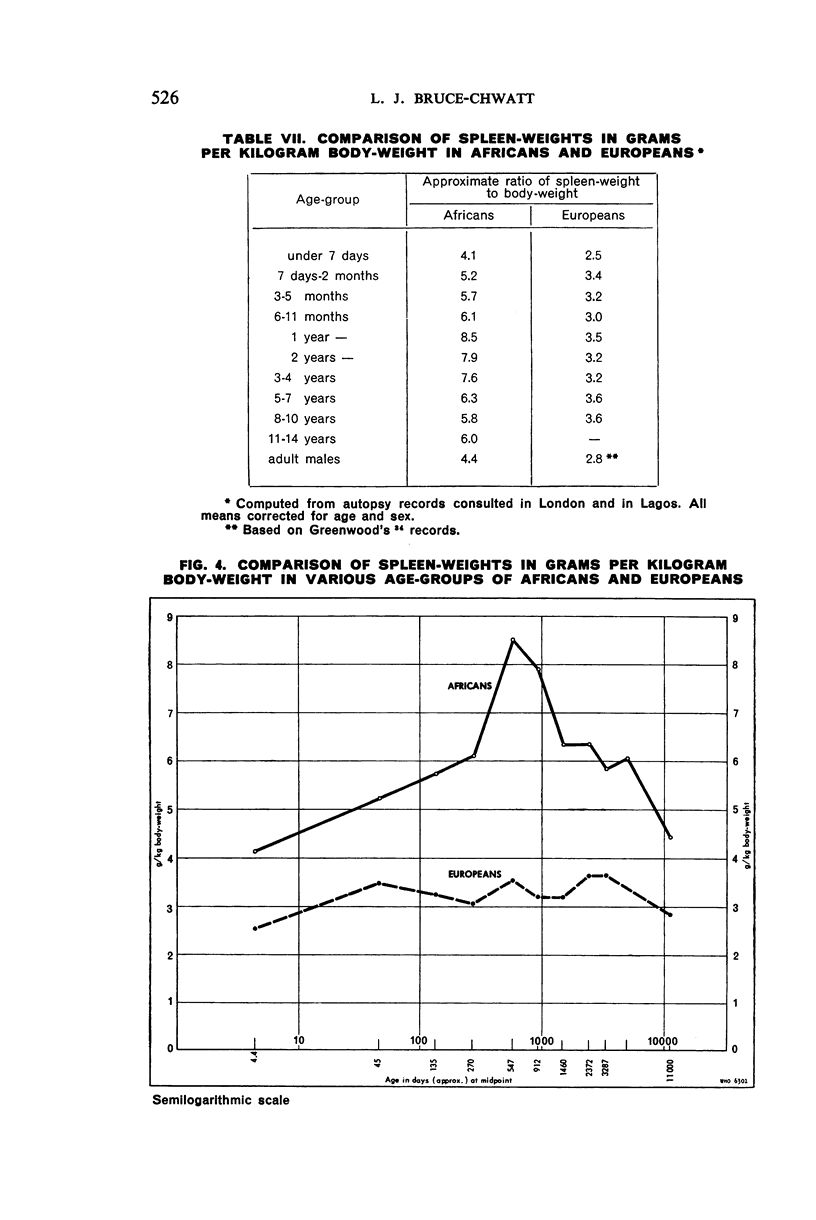

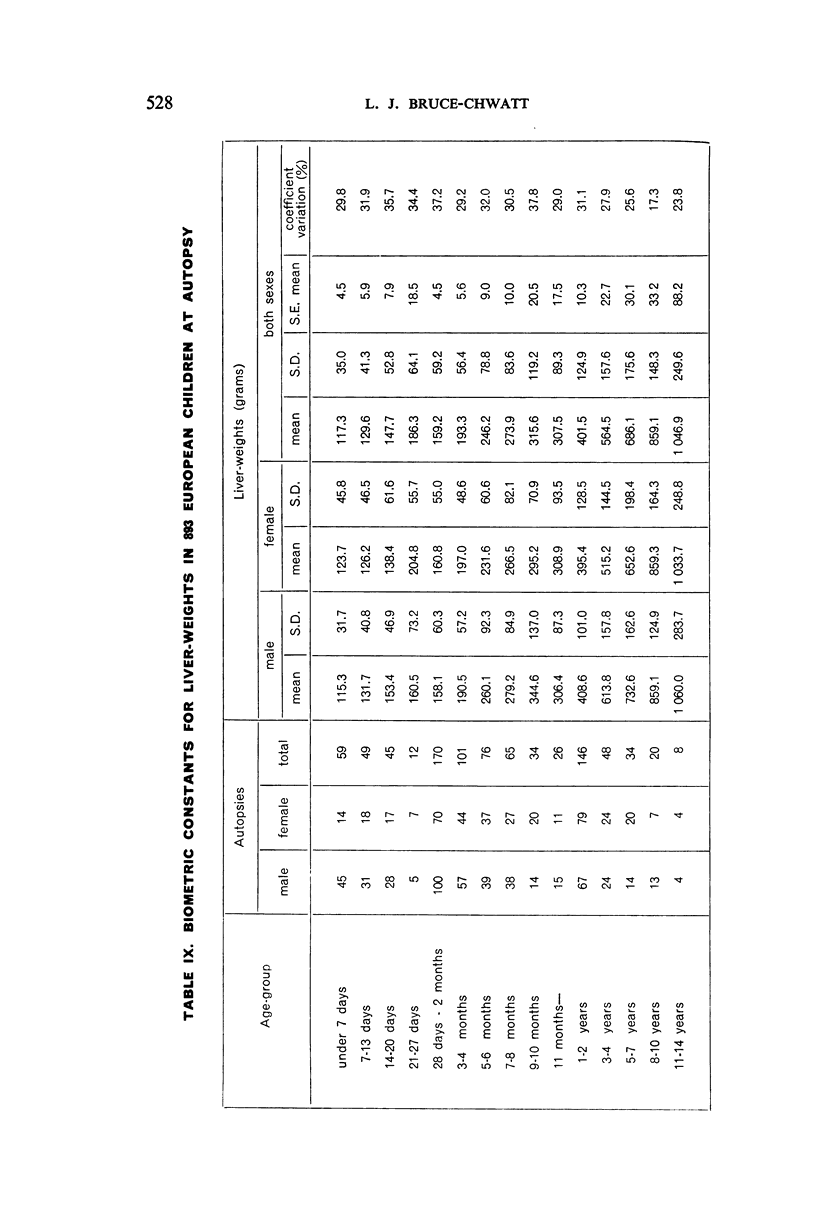


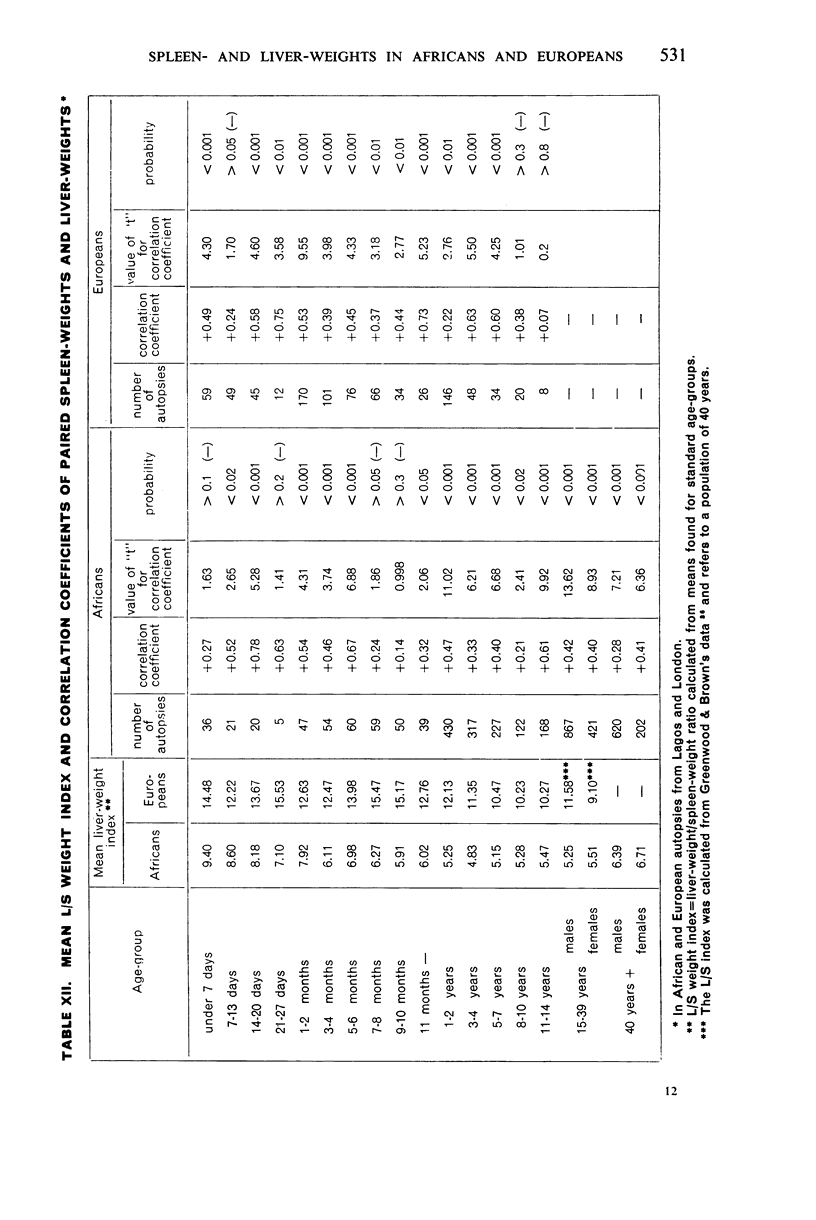
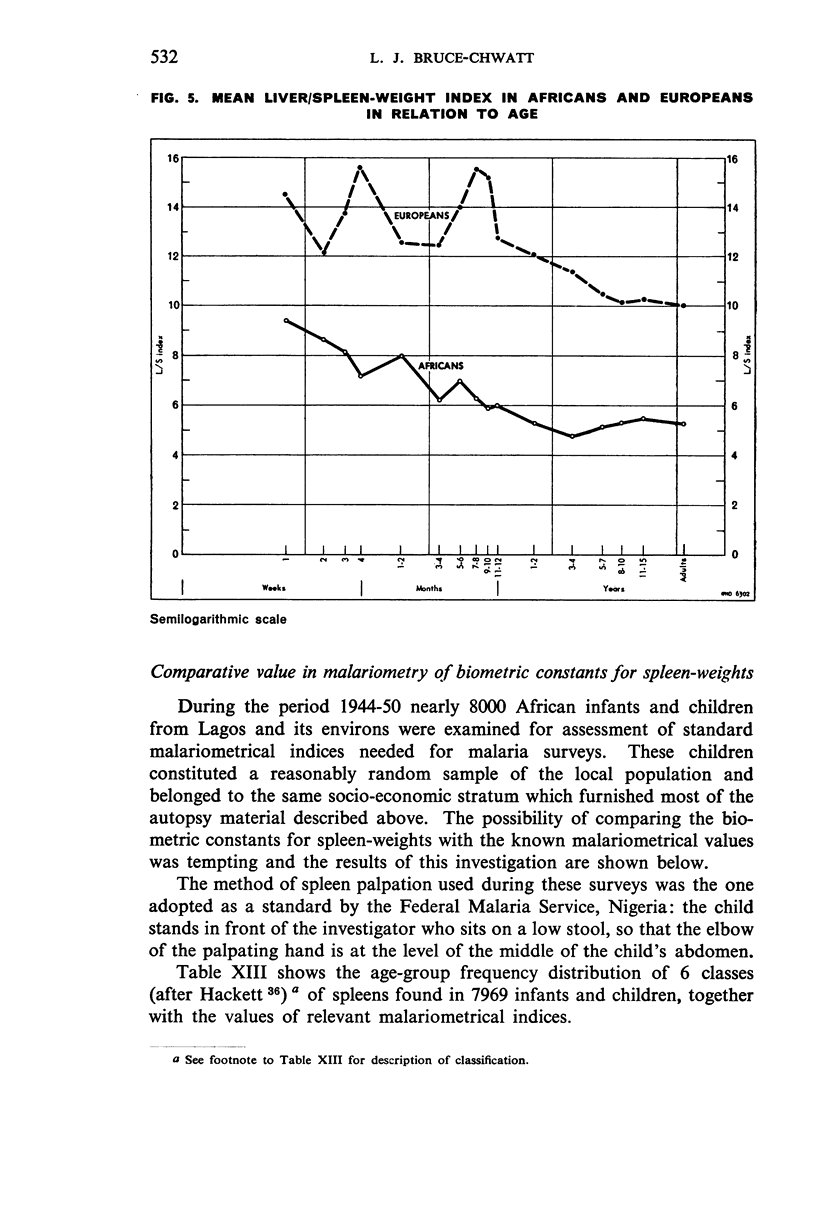
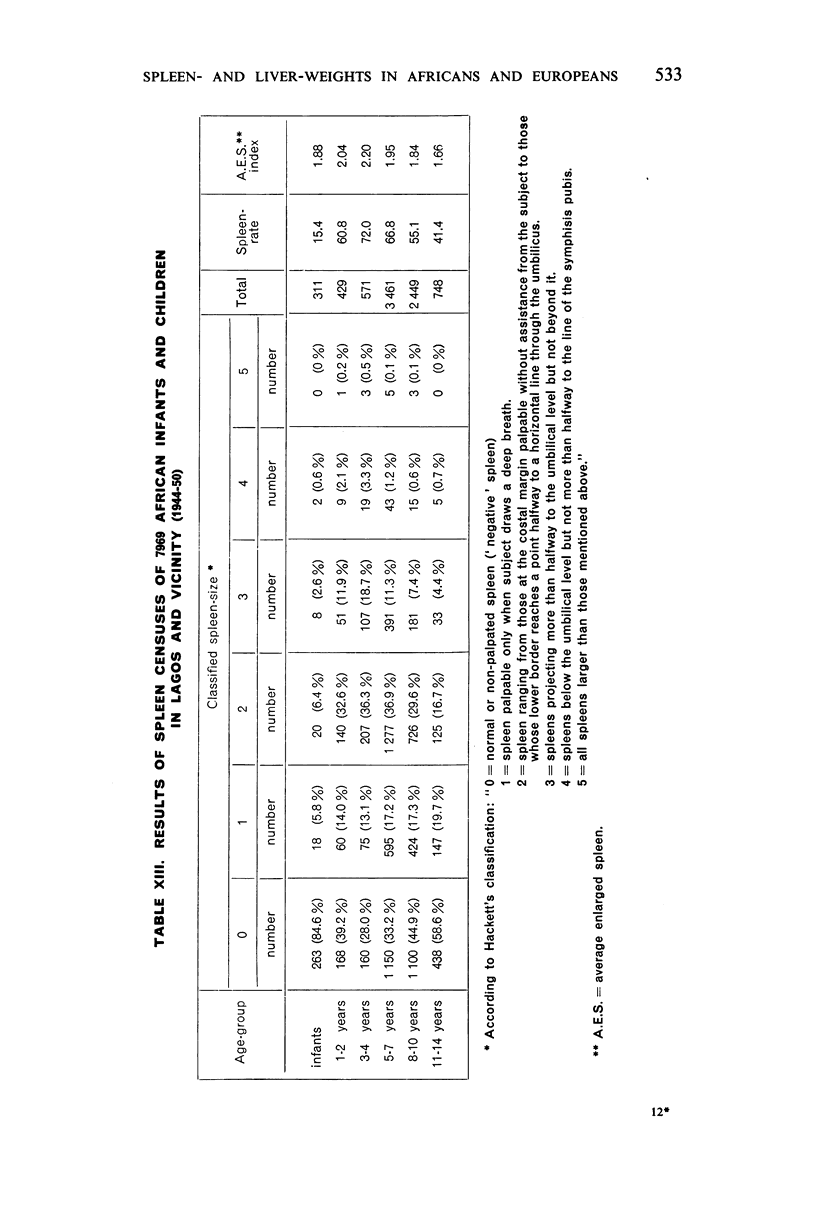

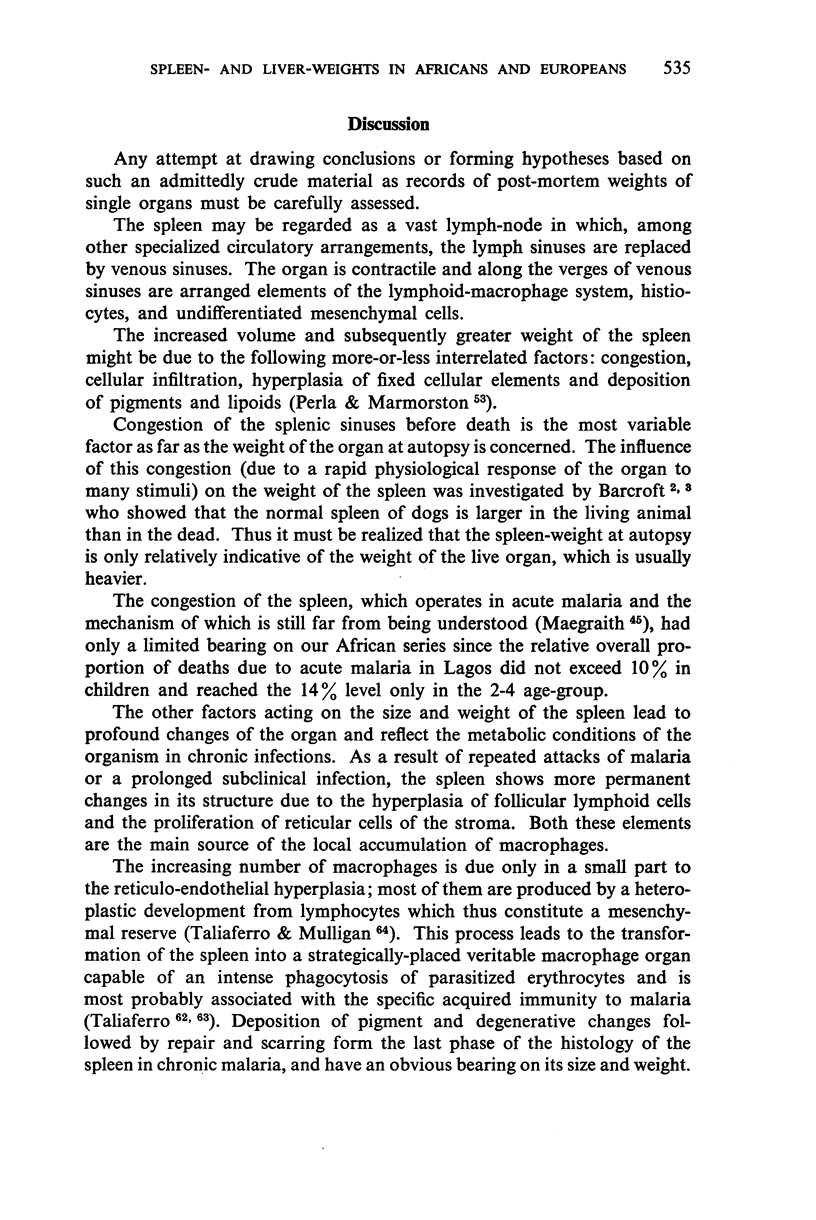

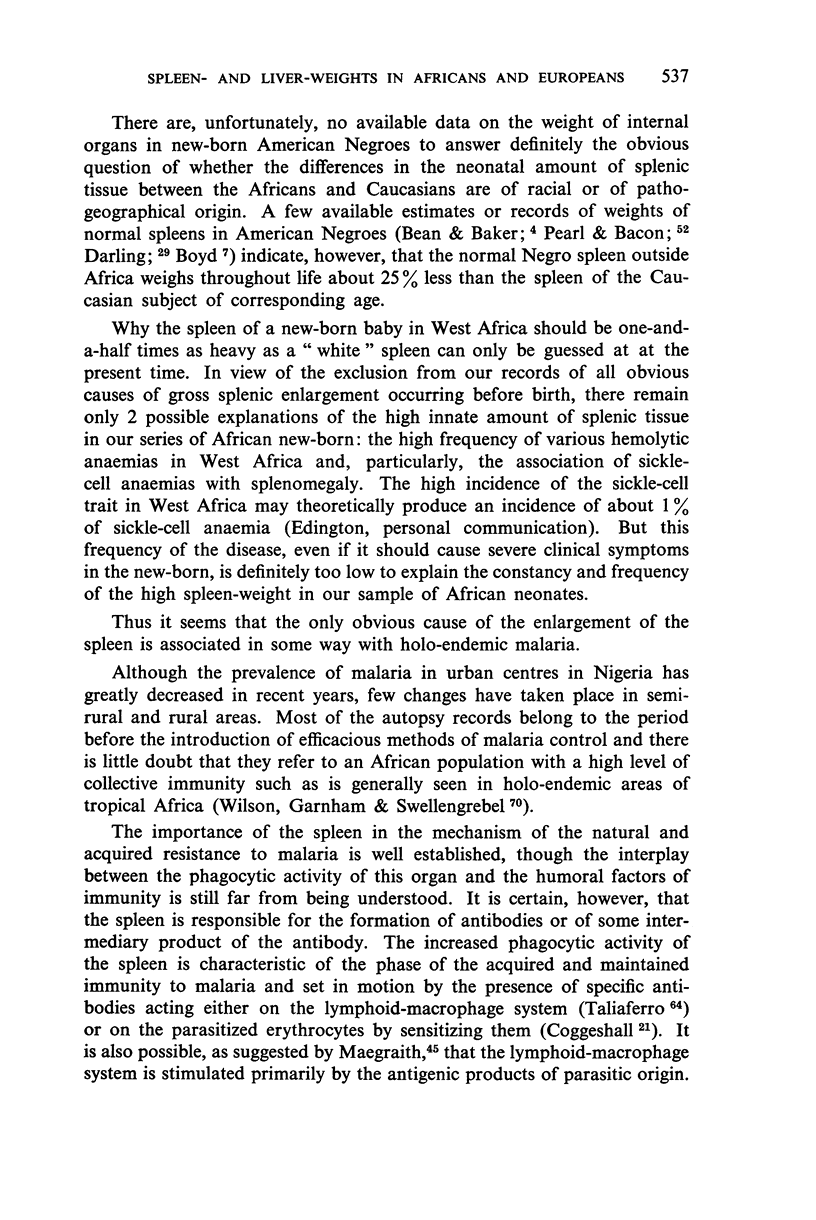
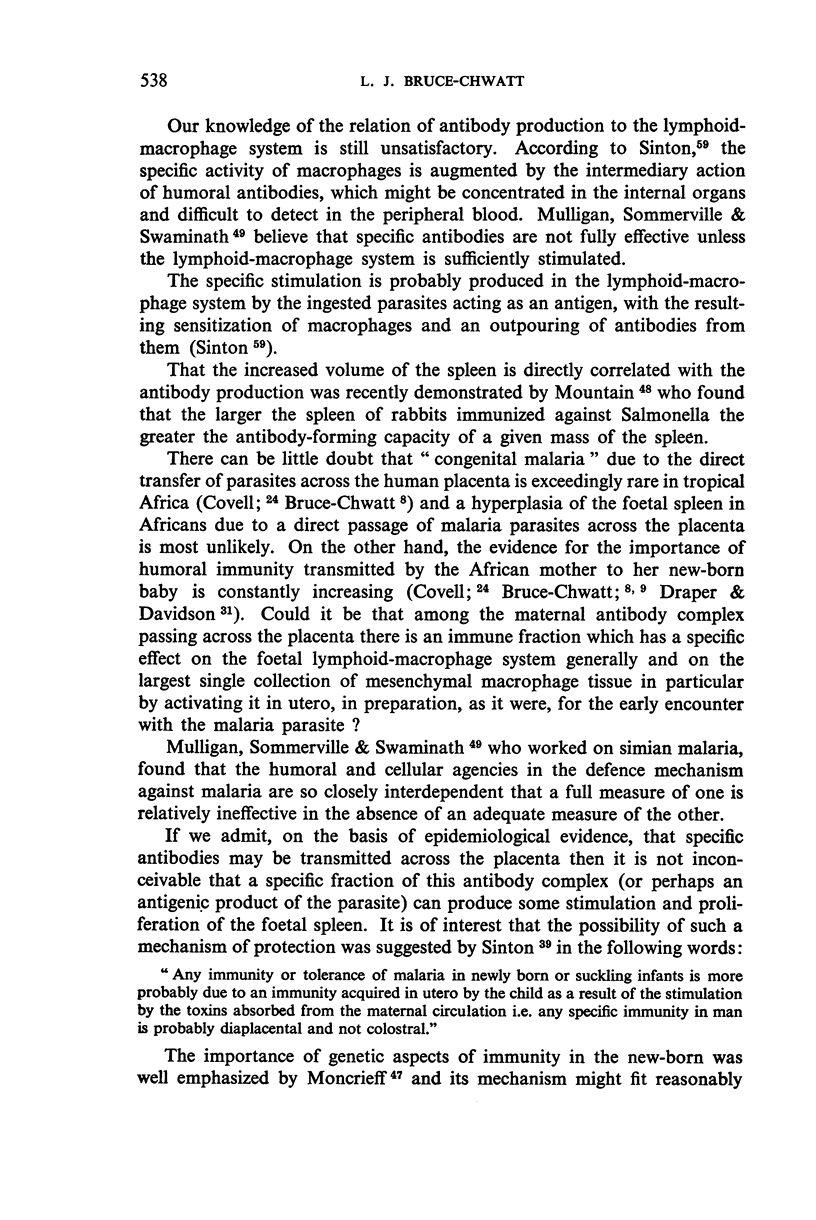
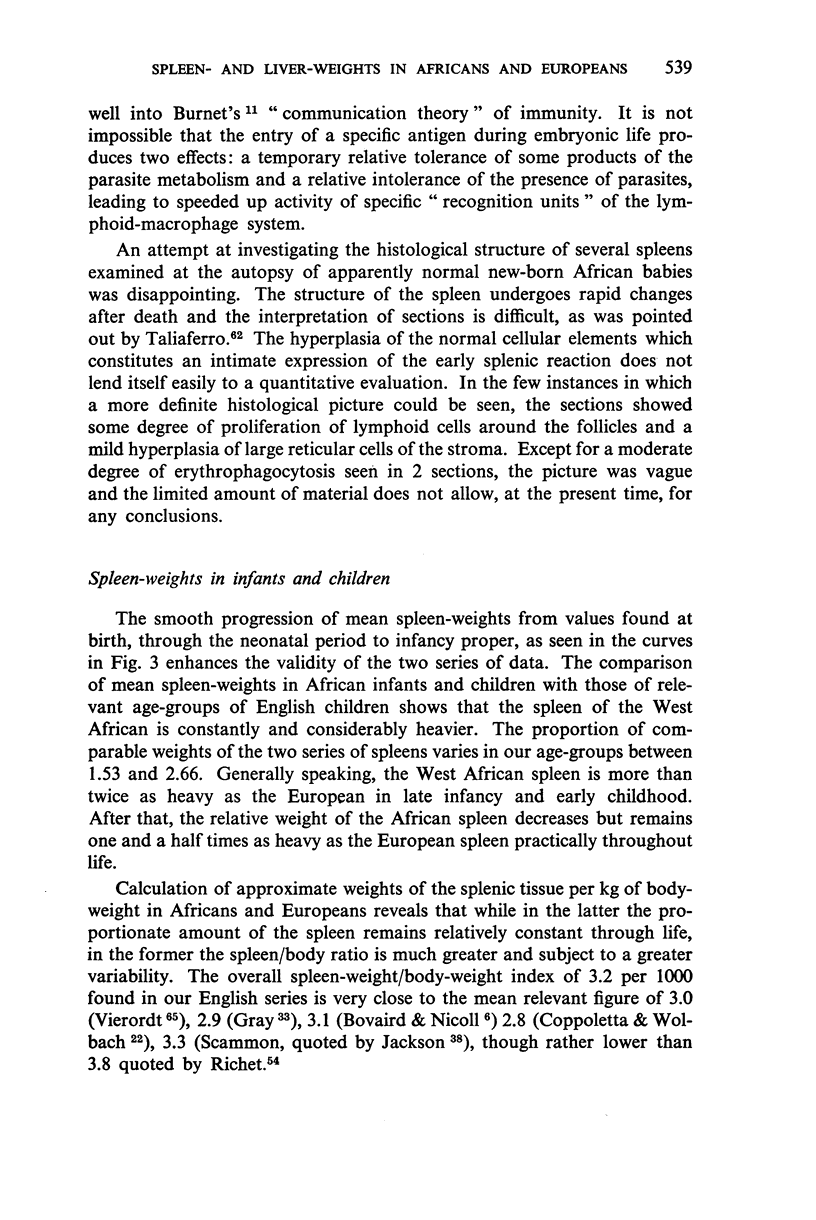
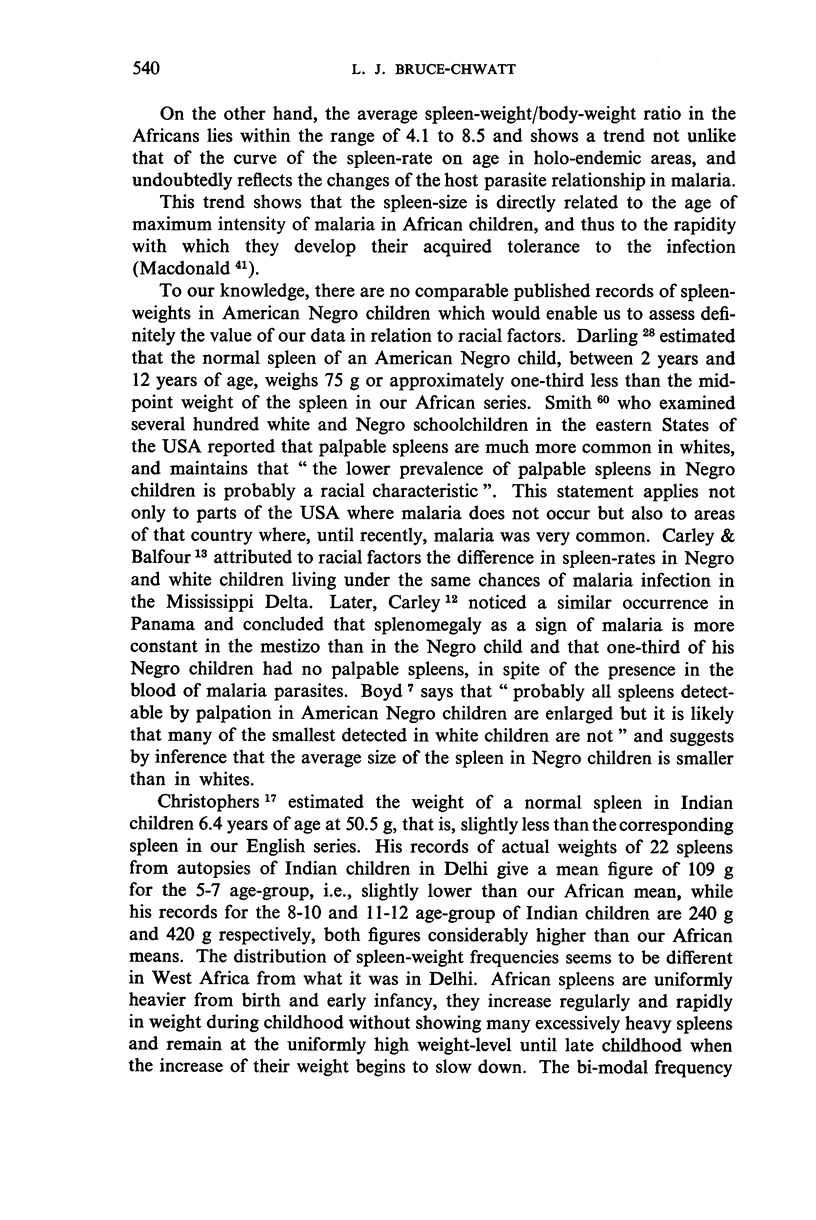
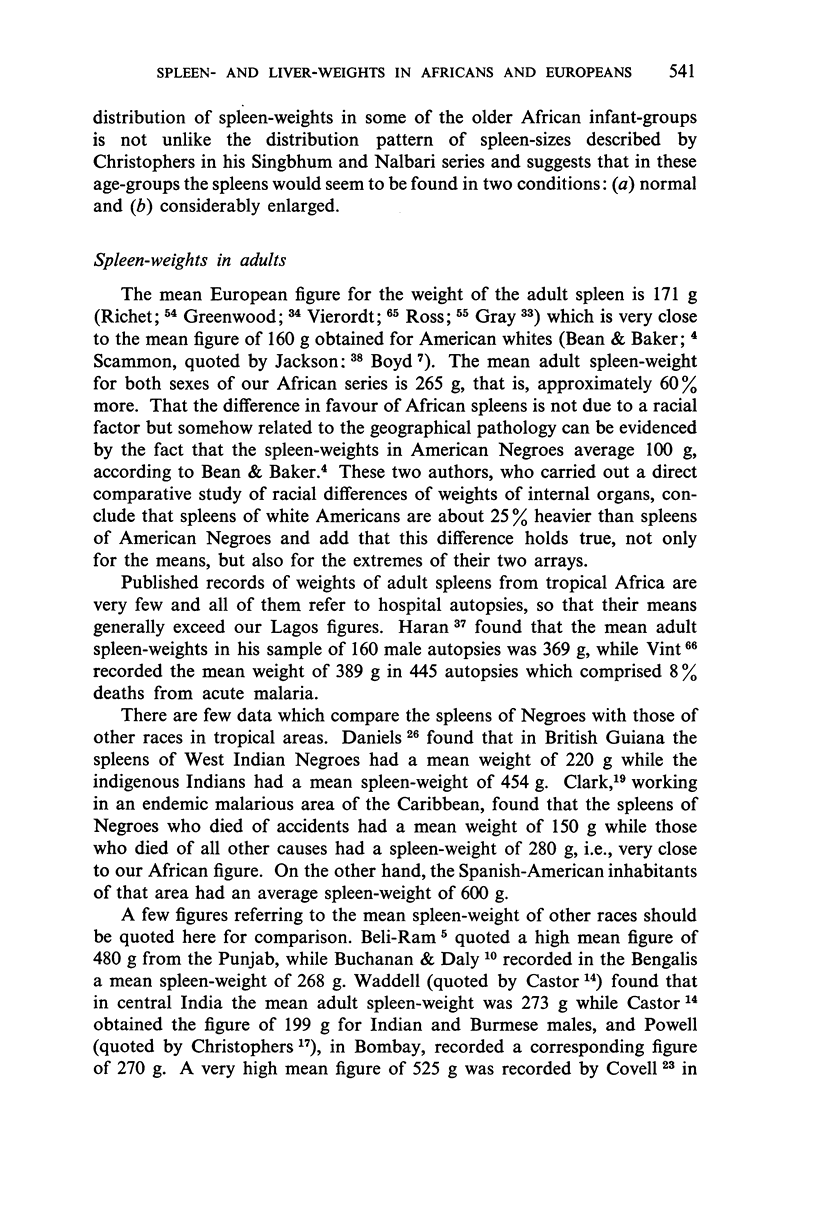

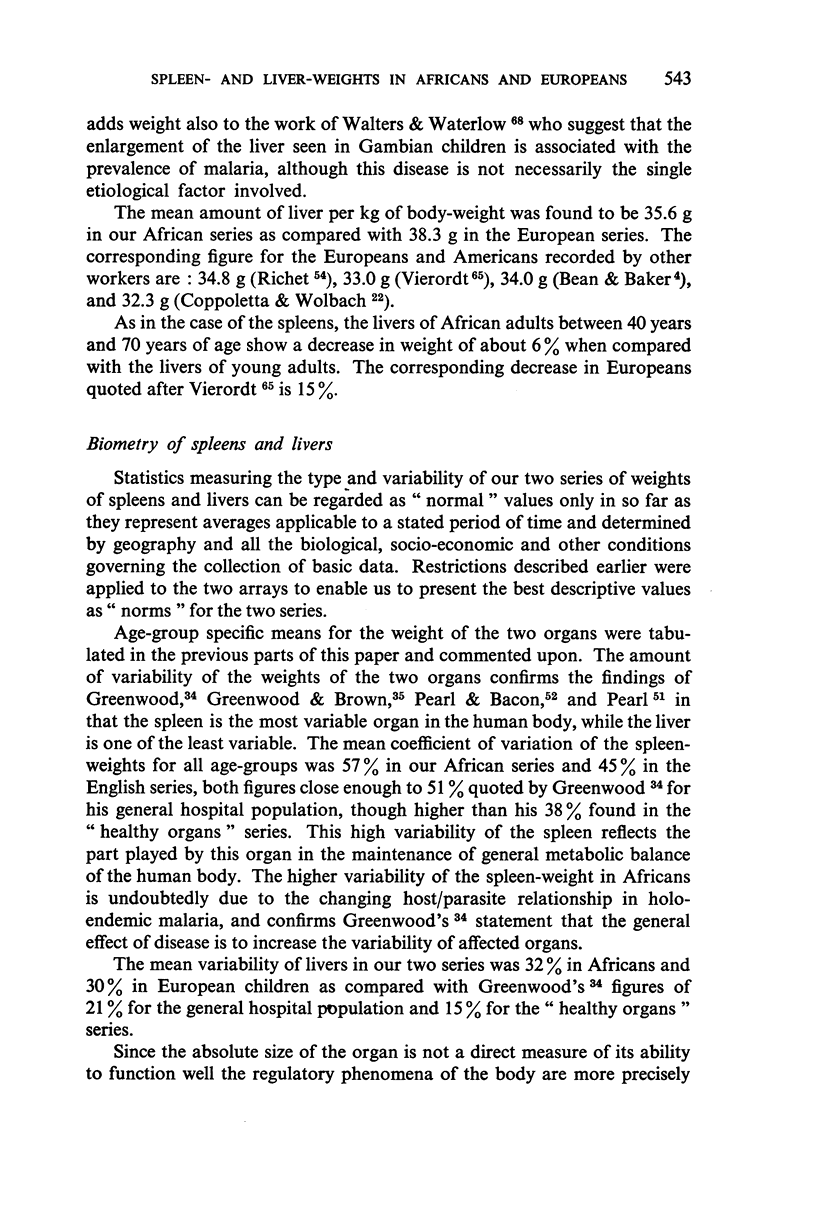
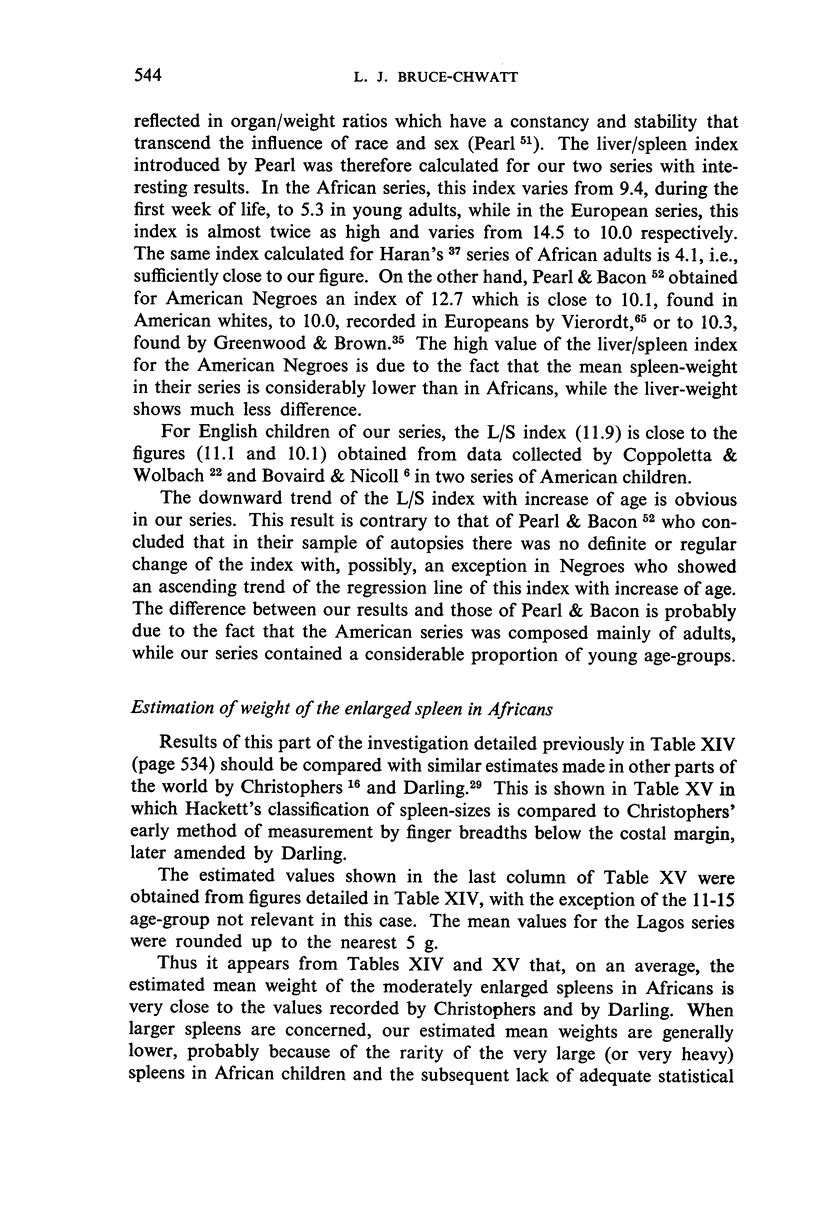
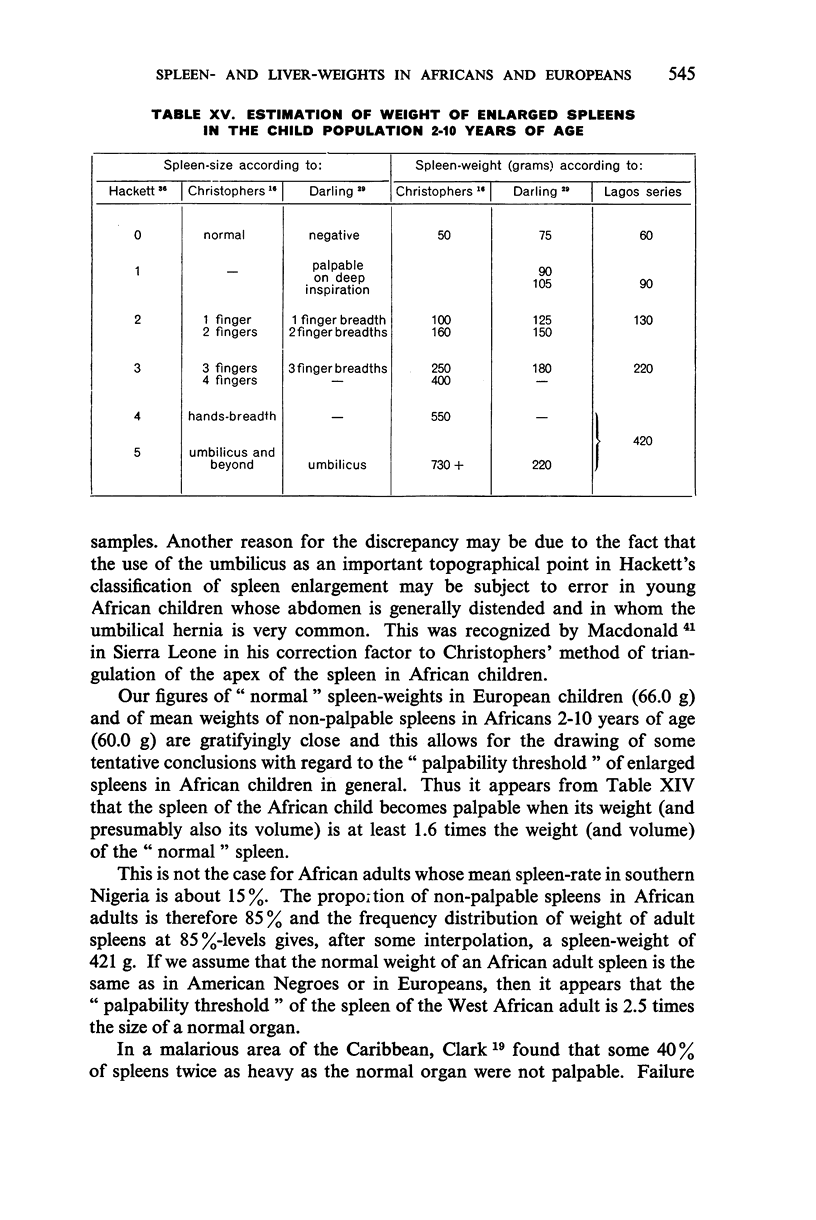


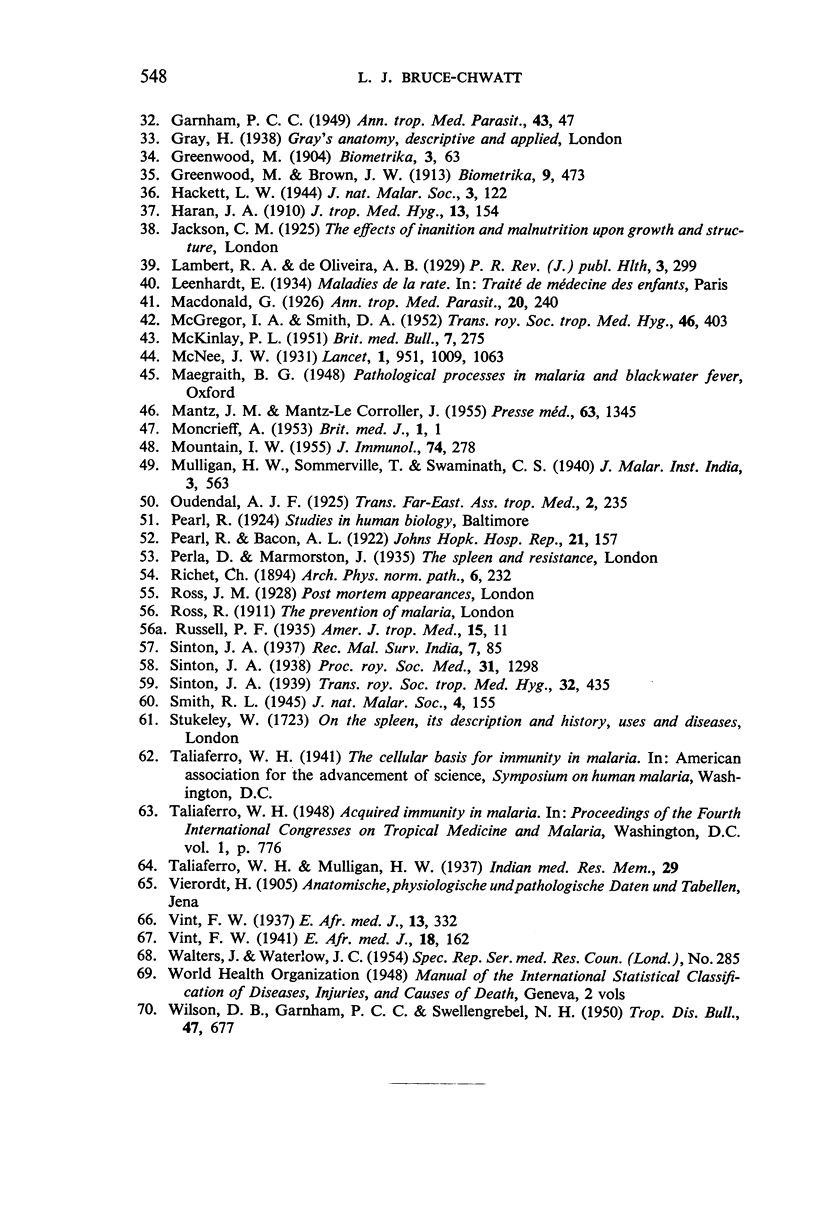
Selected References
These references are in PubMed. This may not be the complete list of references from this article.
- BRUCE-CHWATT L. J. Malaria in African infants and children in Southern Nigeria. Ann Trop Med Parasitol. 1952 Sep;46(2):173–200. doi: 10.1080/00034983.1952.11685522. [DOI] [PubMed] [Google Scholar]
- BURNET M. The newer approach to immunity in its bearing on medicine and biology. Br Med J. 1954 Jul 24;2(4881):189–193. doi: 10.1136/bmj.2.4881.189. [DOI] [PMC free article] [PubMed] [Google Scholar]
- COVELL G. Congenital malaria. Trop Dis Bull. 1950 Dec;47(12):1147–1167. [PubMed] [Google Scholar]
- Coppoletta J. M., Wolbach S. B. Body Length and Organ Weights of Infants and Children: A Study of the Body Length and Normal Weights of the More Important Vital Organs of the Body between Birth and Twelve Years of Age. Am J Pathol. 1933 Jan;9(1):55–70. [PMC free article] [PubMed] [Google Scholar]
- DAVIDSON G., DRAPER C. C. Field studies of some of the basic factors concerned in the transmission of malaria. Trans R Soc Trop Med Hyg. 1953 Nov;47(6):522–535. doi: 10.1016/s0035-9203(53)80005-2. [DOI] [PubMed] [Google Scholar]
- GARNHAM P. C. C. Malarial immunity in Africans; effects in infancy and early childhood. Ann Trop Med Parasitol. 1949 Apr;43(1):47–61. doi: 10.1080/00034983.1949.11685394. [DOI] [PubMed] [Google Scholar]
- MANTZ J. M., MANTZ-LE CORROLLER J. Hypersplénisme et système réticuloendothélial. Presse Med. 1955 Oct 12;63(66):1345–1348. [PubMed] [Google Scholar]
- MONCRIEFF A. Infection in the newborn baby. Br Med J. 1953 Jan 3;1(4800):1–7. doi: 10.1136/bmj.1.4800.1. [DOI] [PMC free article] [PubMed] [Google Scholar]
- MOUNTAIN I. M. Antibody production by spleen in vitro. II. Correlation of weight of rabbit, weight of spleen, and level of antibody produced in vitro. J Immunol. 1955 Apr;74(4):278–280. [PubMed] [Google Scholar]
- McGREGOR I. A., SMITH D. A. A health, nutrition and parasitological survey in a rural village (Keneba) in west Kiang, Gambia. Trans R Soc Trop Med Hyg. 1952 Jul;46(4):403–427. doi: 10.1016/0035-9203(52)90058-8. [DOI] [PubMed] [Google Scholar]
- McKINLAY P. L. The measurement of normality. Br Med Bull. 1951;7(4):275–277. doi: 10.1093/oxfordjournals.bmb.a073918. [DOI] [PubMed] [Google Scholar]
- Sinton J. A. Immunity or Tolerance in Malarial Infections: (Section of Comparative Medicine). Proc R Soc Med. 1938 Sep;31(11):1298–1302. [PMC free article] [PubMed] [Google Scholar]
- WILSON D. B., GARNHAM P. C. C., SWELLENGREBEL N. H. A review of hyperendemic malaria. Trop Dis Bull. 1950 Aug;47(8):677–698. [PubMed] [Google Scholar]


